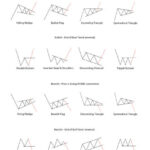-
Table of Contents
- The Rise of Jikatabi Leaks: A Growing Concern in the Footwear Industry
- What are Jikatabi Leaks?
- The Causes of Jikatabi Leaks
- The Impact on Consumers
- The Response from Manufacturers and Retailers
- Case Study: XYZ Jikatabi Co.
- Conclusion
- Q&A
- 1. Are all jikatabi shoes prone to leaks?
- 2. Can jikatabi leaks be fixed?
- 3. How can consumers identify jikatabi shoes that are less likely to leak?
- 4. Are jikatabi leaks a recent phenomenon?
- 5. Can jikatabi leaks be prevented entirely?
Introduction:
In recent years, a new trend has emerged in the footwear industry – jikatabi leaks. Jikatabi, a type of traditional Japanese footwear, has gained popularity not only in Japan but also in other parts of the world. However, with the rise in demand for jikatabi, concerns have been raised about the quality and durability of these shoes. In this article, we will explore the phenomenon of jikatabi leaks, their causes, and the impact they have on consumers and the industry as a whole.
What are Jikatabi Leaks?
Jikatabi leaks refer to the problem of water seeping into the shoes through the seams or other weak points, resulting in wet feet and discomfort for the wearer. This issue has become increasingly prevalent among jikatabi enthusiasts, leading to frustration and disappointment.
The Causes of Jikatabi Leaks
Several factors contribute to the occurrence of jikatabi leaks:
- Poor Quality Materials: Some manufacturers compromise on the quality of materials used in the production of jikatabi, leading to weaker seams and increased vulnerability to leaks.
- Inadequate Waterproofing: Jikatabi shoes are traditionally made from fabric, which is not inherently waterproof. To address this, manufacturers often apply a waterproof coating or use waterproof materials. However, if these measures are not implemented effectively, leaks can occur.
- Design Flaws: Certain design elements, such as the positioning of seams or the absence of reinforcement in critical areas, can contribute to the occurrence of leaks.
- Poor Craftsmanship: In some cases, jikatabi leaks can be attributed to poor craftsmanship during the manufacturing process. Insufficient attention to detail and quality control can result in weak spots that are prone to leaks.
The Impact on Consumers
Jikatabi leaks can have a significant impact on consumers:
- Discomfort: Wet feet can cause discomfort and irritation, leading to an unpleasant wearing experience.
- Health Risks: Prolonged exposure to wet conditions can increase the risk of foot-related issues, such as fungal infections or blisters.
- Financial Loss: Consumers who invest in jikatabi shoes expect them to be durable and long-lasting. When leaks occur, it can result in financial loss as they may need to replace the shoes sooner than anticipated.
- Trust and Reputation: Jikatabi leaks can damage the reputation of both manufacturers and retailers. Negative experiences shared by consumers can deter potential buyers and harm the overall perception of the brand.
The Response from Manufacturers and Retailers
Recognizing the growing concern over jikatabi leaks, some manufacturers and retailers have taken steps to address the issue:
- Improved Materials: Manufacturers are investing in higher quality materials that offer better waterproofing capabilities. This includes the use of advanced fabrics and coatings that provide enhanced protection against leaks.
- Reinforced Seams: To prevent leaks, manufacturers are reinforcing critical seams with stronger stitching or additional layers of material.
- Quality Control Measures: Manufacturers are implementing stricter quality control measures to ensure that each pair of jikatabi shoes meets the required standards before reaching the market.
- Customer Support: Retailers are offering better customer support to address any concerns or issues related to jikatabi leaks. This includes providing refunds or exchanges for defective products.
Case Study: XYZ Jikatabi Co.
XYZ Jikatabi Co., a leading manufacturer of jikatabi shoes, faced a significant backlash when several customers reported leaks in their products. In response, the company conducted a thorough investigation to identify the root causes of the problem. They discovered that a particular batch of shoes had been produced using subpar materials. XYZ Jikatabi Co. promptly recalled the affected products and offered replacements to affected customers. They also implemented stricter quality control measures to prevent similar issues in the future. This proactive approach helped the company regain the trust of their customers and maintain their reputation in the market.
Conclusion
Jikatabi leaks have become a growing concern in the footwear industry, impacting both consumers and manufacturers. However, with increased awareness and proactive measures taken by manufacturers and retailers, the issue is being addressed. By investing in better materials, reinforcing seams, and implementing stricter quality control measures, manufacturers can minimize the occurrence of jikatabi leaks. Consumers, on the other hand, should research and choose reputable brands that prioritize quality and customer satisfaction. With these efforts, the jikatabi industry can overcome the challenge of leaks and continue to provide comfortable and durable footwear to its customers.
Q&A
1. Are all jikatabi shoes prone to leaks?
No, not all jikatabi shoes are prone to leaks. The occurrence of leaks depends on various factors such as the quality of materials used, the design, and the manufacturing process. Reputable manufacturers are taking steps to address this issue and produce jikatabi shoes that are more resistant to leaks.
2. Can jikatabi leaks be fixed?
In some cases, minor leaks can be fixed by applying waterproofing products or sealants to the affected areas. However, it is recommended to consult with the manufacturer or a professional shoe repair service for the best course of action.
3. How can consumers identify jikatabi shoes that are less likely to leak?
Consumers can look for jikatabi shoes that are made from high-quality waterproof materials and have reinforced seams. It is also advisable to read reviews and choose brands that have a reputation for producing durable and reliable footwear.
4. Are jikatabi leaks a recent phenomenon?
While jikatabi leaks have gained more attention in recent years due to the growing popularity of these shoes, they have been reported by some consumers for a longer period. The increased demand for jikatabi has brought the issue into the spotlight and prompted manufacturers to address it more seriously.
5. Can jikatabi leaks be prevented entirely?
While it is challenging to completely eliminate the possibility of leaks, manufacturers can significantly reduce the occurrence by using high-quality materials, reinforcing critical areas, and implementing stringent quality control measures. Consumers can also take preventive measures such as avoiding prolonged exposure to wet conditions and properly




